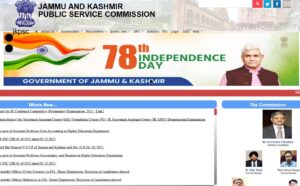Table of Contents
Need of SEBI Regulation
- To ensure that unverified rumours do not shake investor confidence and affect decision-making.
- To ensure timely disclosure of significant material events or information.
- Uniformity for disclosures by listed entities, to help them better determine what constitutes a material event or information.
- It is done under SEBI (Listing Obligations and Disclosure Requirements) Regulations, 2015.
- To keep pace with the changing market dynamics.
- In the age of readily available information, it is expected that the listed entities adopt technology-based solutions for ease of compliance.
Highlights of SEBI Regulation
- Goal: To tackle ambiguity by provisioning room for relevant disclosures.
- Proposed Revisions In Materiality Thresholds:
- SEBI proposes quantitative thresholds to replace the current process of assessment of the materiality of an event, which is done by the company’s board.
- Listed entities should disclose all events or information whose threshold value or expected impact in terms of value exceeds 2% of either its turnover or net-worth as per the last audited standalone financial statement, or 5% of the three-year average of absolute value of profit/loss after tax as per the last three audited standalone financial statements of the entity.
- Companies should disclose their loan agreements as a lender and not just as a borrower
- Proposed Disclosures:
- They are directed towards preventing any false market sentiment or impact on the securities of a company.
- Top 250 listed entities, based on market capitalisation at the end of the previous assessment year, would have to clearly deny or refute such rumours.
- Companies need to disclose any actions initiated by a regulatory, statutory, enforcement or judicial authority against any of its directors, key managerial personnel, promoter or subsidiary in relation to the entity.
- It include lowering disclosure thresholds and a better illustration of what constitutes a material event.
- Timeline For Disclosure
- SEBI proposes that disclosures relating to events or information originating from within the company be made within twelve hours instead of the existing mandate of twenty-four hours.
- SEBI proposes revising the 5% threshold to 2% for companies to disclose acquiring shares or voting rights in a company.
- It proposes giving 12 hours for the disclosure of all such transactions.
Securities and Exchange Board of India (SEBI)
- It is India’s securities and commodity market regulator, reporting to the Ministry of Finance of the Indian government.
- It is a statutory body formed under SEBI Act of 1992.
- SEBI is a quasi-legislative and quasi-judicial body which can draft regulations, conduct inquiries, pass rulings and impose penalties.
- It functions to fulfill the requirements of three categories –
- Issuers – By providing a marketplace in which the issuers can increase their finance.
- Investors – By ensuring safety and supply of precise and accurate information.
- Intermediaries – By enabling a competitive professional market for intermediaries.


 Punjab PCS Question Paper 2025 Out: Down...
Punjab PCS Question Paper 2025 Out: Down...
 Punjab PCS Answer Key 2025 (Out Soon): G...
Punjab PCS Answer Key 2025 (Out Soon): G...
 JKPSC Question Paper 2025 Out: Download ...
JKPSC Question Paper 2025 Out: Download ...

























